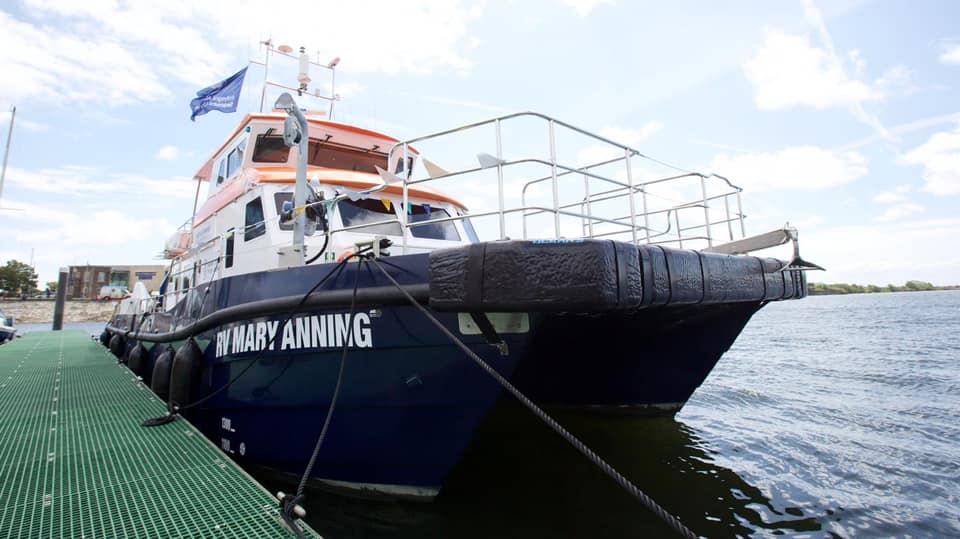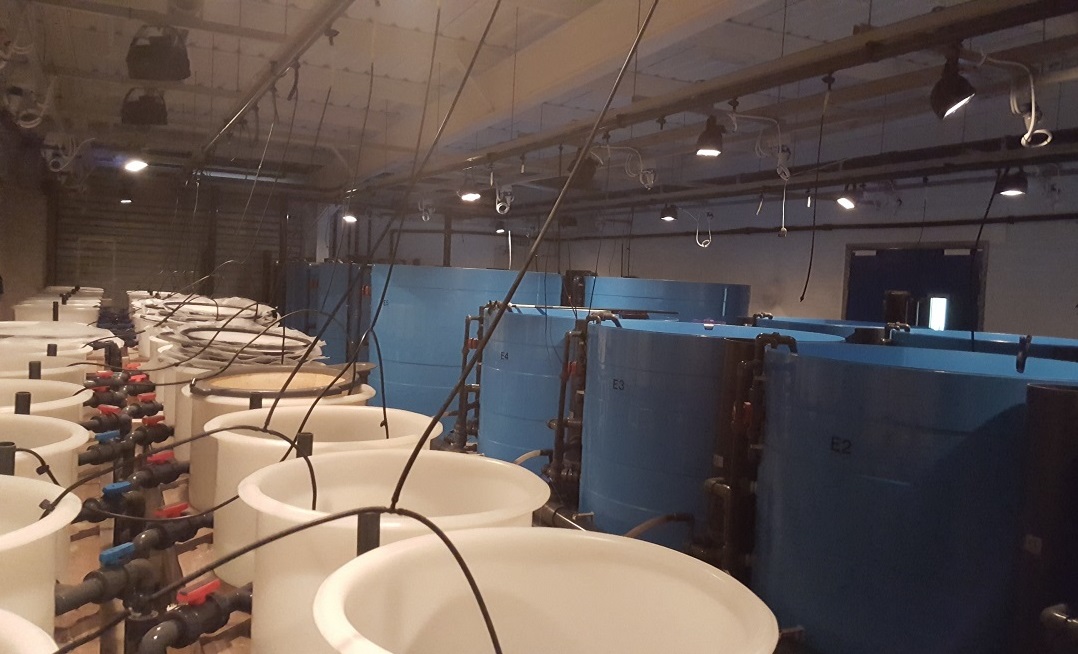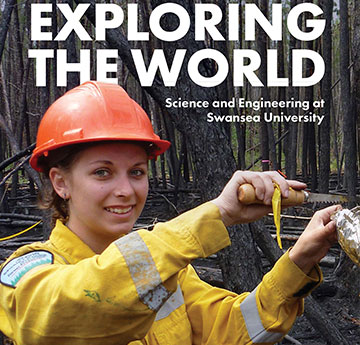Swansea University's Biosciences facilities offer an unparalleled environment for cutting-edge research, education, and innovation, and continue to make significant contributions to the advancement of bioscience and its impact on society.
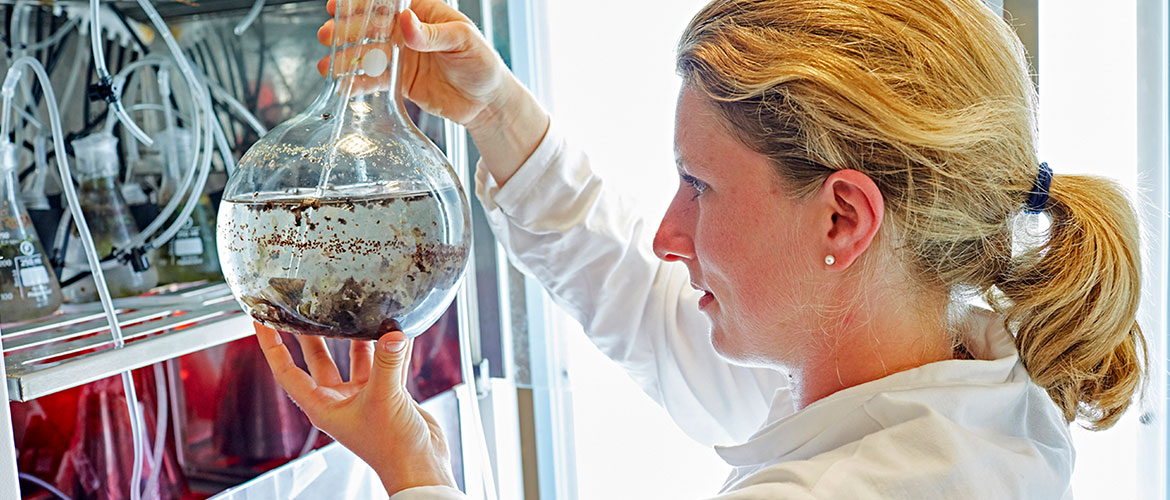
The R. V. Mary Anning
Our new £1.3 m purpose-built catamaran research vessel which will carry 26 passengers and allow all of our students and researchers to conduct activities in Swansea Bay and further afield. The Mary Anning is designed as a stable working platform that can work inshore as well as offshore with the speed to reach destinations quickly if needed, her most economical speed is 18 kts which is reasonably fast for a vessel of this size.
Wind Tunnel
The wind tunnel is a new facility designed to enable collaborative research on animal flight between biologists and engineers. It has a large test area where birds fly (1.8 m wide by 1.5 m high by 2.2 m long). Accelerating air through such a large volume requires a big structure to house the fans, reduce fan noise and minimise the turbulence of the airflow. The tunnel itself also tilts, enabling the study of climbing and gliding flight. The end result is a tunnel > 17 m long and weighing > 20T. All this to improve our understanding of birds that weigh about the same as a can of beans.
Swansea Lab for Animal Movement (SLAM)
One of our core strengths is the visualisation and analysis of animal movement data, particularly multi-dimensional, high-frequency data from animal-attached technology. This has been hugely enhanced by our state-of-the-art imaging facility, funded by a Royal Society Wolfson Laboratory refurbishment grant. The facilities include a computer cluster capable of processing large volumes of data, an array of high-definition screens for data visualisation, and an electronics laboratory for the development of animal-attached technologies.
An electronic wall (1.5 X 4 m) linked to a computer-tesla cluster for high-speed processing and visualisation of complex accelerometry and magnetometry data derived from animals. The suite uses bespoke ‘smart tags’ with bespoke software to understand the ‘rules’ behind animal movement and their consequences, dealing with issues ranging from the micro-movements of people belaying ‘state’ to trans-continental animal migrations.
Centre of Sustainable Aquatic Research
The Centre for Sustainable Aquatic Research, CSAR, is a centre of excellence founded in 2003 with support from the European Union, Welsh Assembly Government and Swansea University. Equipped with modern, fully programmable recirculating aquaculture systems, CSAR is designed for applied research on a diverse range of aquatic organisms, from temperate to tropical and marine to freshwater environments. CSAR is one of the most comprehensive university-based aquatic research facilities in Europe.
Tag Construction Laboratory
The Tag Construction Lab is set up for research, development and realisation of animal tags with new capacities to study the causes and consequences of animal movement by using animal-attached technology. Work involves sensors, energy-harvesting systems, and miniaturization of electronics as well as 3-D printing technology and testing of housings so that tags can be constructed to be robust whilst having minimal impact on their wearers.
The Arthropod Behavioural Laboratory
The Arthropod Behavioural Lab is used to monitor the behaviour of insects using conventional video cameras as well as animal-attached sensors such as accelerometers developed in the Tag Construction Laboratory and analysed in the visualisation suite. Projects include the reaction of insect pests to semio chemicals and assessment of behavioural cues that relate to ‘state’.
Endocrinology Research Laboratory
The Endocrinology Research Lab is specialised in non-invasive hormone analysis and tackles timely questions in general and behavioural endocrinology. Work involves the quantification of various hormones (e.g. reproductive and stress hormones) in water, hair, saliva, and faecal samples, collected from a wide range of species from fish to humans.
Swansea University Zoology Museum
The Swansea University Zoology Museum is home to over 2000 vertebrate and invertebrate specimens. In the museum you will find skulls and complete skeletons, mammal skins, bird skins, feathers and eggs, fluid-preserved specimens, pinned insects, shells, and fossils, as well as a small herbarium collection. The specimens are used in several undergraduate practicals, research projects, and outreach events. The museum is looked after by the bioscience technical team and student interns.
Instagram @swanseuni_zoologymuseum
Swansea University Zoology Museum
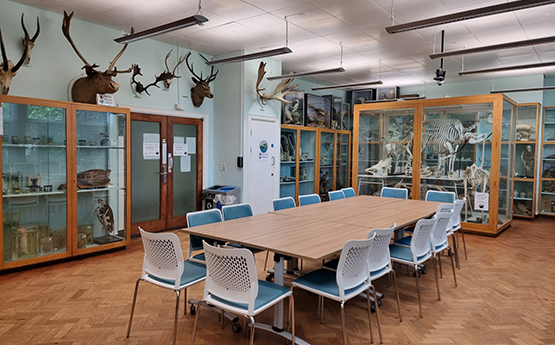
Bioscience Teaching Laboratories
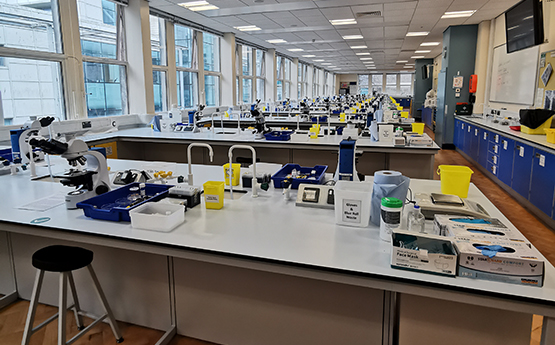
Bioscience Teaching Laboratories
Undergraduate practicals are held in the teaching labs within Wallace and Margam. We have 3 wet labs and 1 dry lab in which we run practicals for 60-120 students. Examples of practicals include dissections to compare vertebrate anatomy, DNA and protein extractions from plants and animals, microbiology of bacteria and fungi, animal physiology, entomology, parasitology, botany, and microscopy. We also have a project lab in which students can do research for their 3rd year dissertations with the support of the bioscience technical team and academics.
TikTok swanseaunibiotechtok
UG Webinars
Webinars for Undergraduate Students


